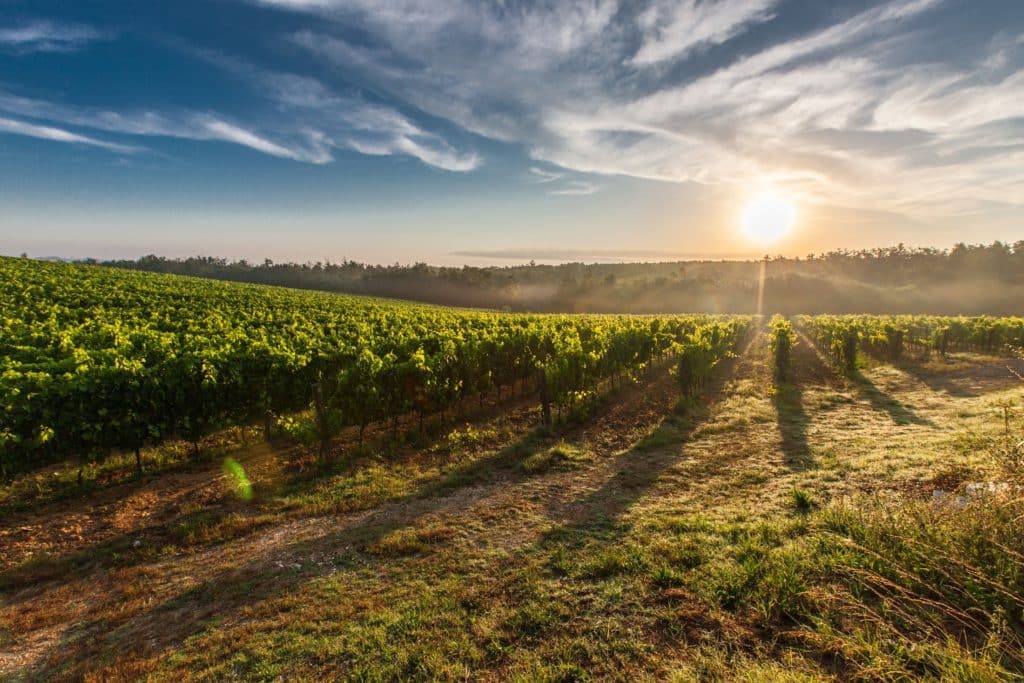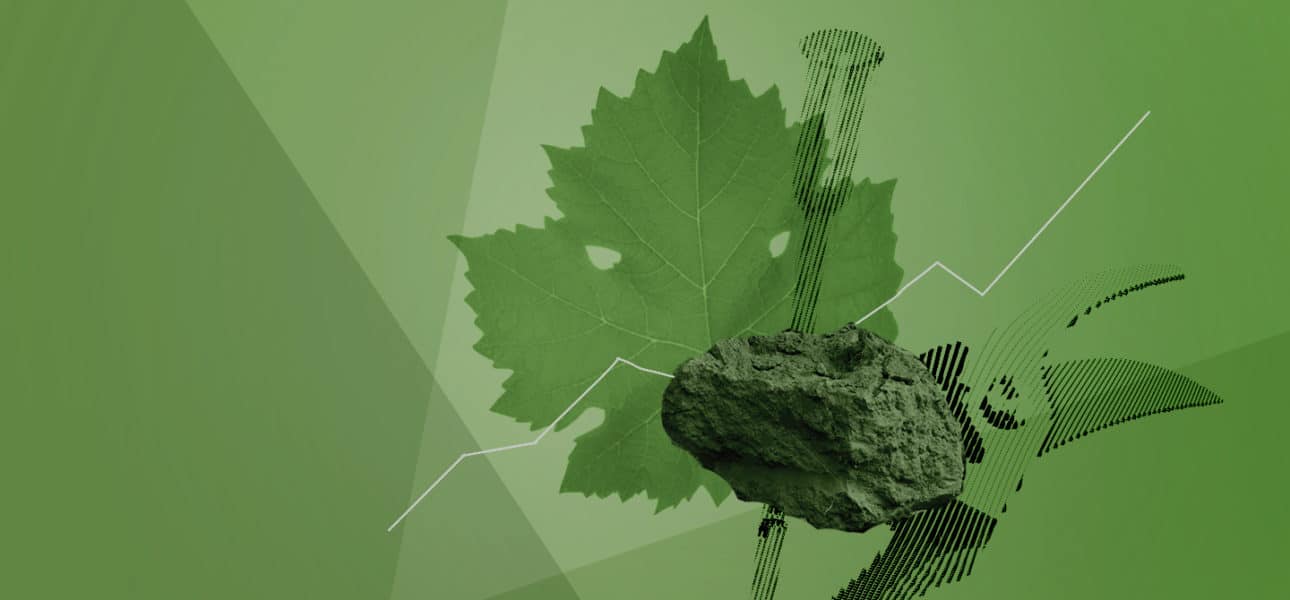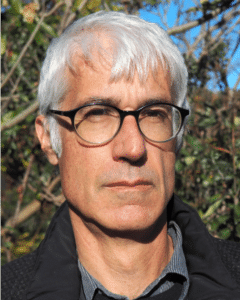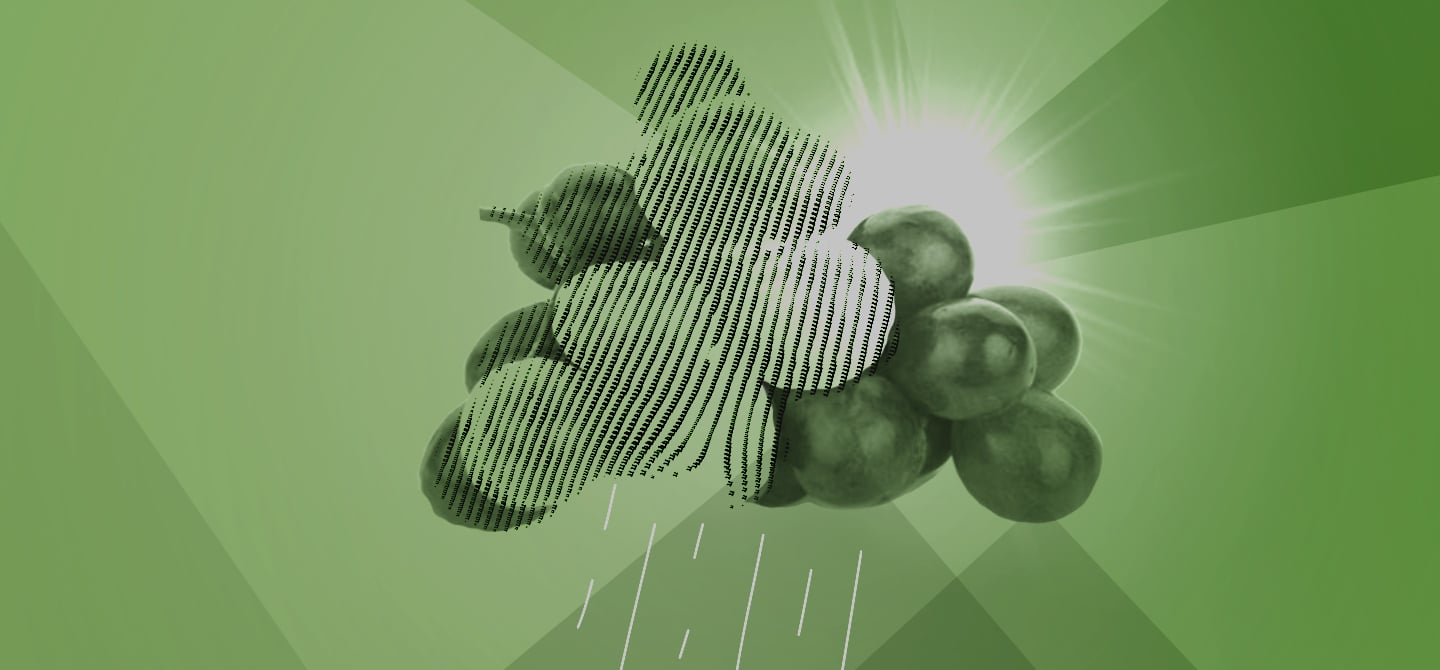In France, wine is of the upmost economic and cultural importance. Before the Covid-19 pandemic, the industry was generating as much as ~€14bn turnover as the country’s second largest after aerospace. The wine industry is also key to attracting tourism and promoting the country’s reputation. Value created by winemaking is closely tied to the notion of region (of “terroir”), reliant on the fine balance of soil and climate conditions, grape varieties, expertise and product quality; all of which are guaranteed by geographical indications (AOP, “appellation d’origine protégée” or IGP “indication géographique protégée”). However, dependency of the wine sector on climate conditions makes it particularly vulnerable to climate change.
In 2021, we launched the Laccave research to study the effects of global warming on wine and to research possible means of adaption. Laccave brings together 24 laboratories, mainly from INRAE and CNRS, as well as universities in agricultural science. Overall, around 90 researchers and PhD students are involved in the project from a variety of scientific disciplines such as climate science, economy, genetics, agronomy, oenology and geography. The project is also open to key French government institutions like the INAO (National Institute of Origin and Quality) or FranceAgriMer, to forecast changes in the run up to 2050.
During the initial phase from 2012 to 2016, the Laccave project made it possible to share and clarify our knowledge on the impacts of climate change on vineyards and wine. For starters, due to mild winters and rising average temperatures, all stages of vine maturity occur earlier: budding, blossoming, ripening (known as “veraison”) and grape maturity. As such, harvests now begin several weeks earlier than in the 1980s. Vineyards are also confronted with drier summers, faced with an increase in hydric stress – especially in the South of France – impacting yield, grape composition and characteristics of the wine they produce. Wines contain more alcohol, are less acid and aromas differ; notably the taste is said to have less complex notes and hinting more towards stewed fruits than fresh ones.
For wine amateurs and winemakers, these phenomena are already noticeable. For example, the harvest of Châteauneuf-du-Pape now begins late August/early September, whereas in the 1950s it would have taken place between September 20th to October 5th. In Gruissan, in the Aude region, annual rainfall has dropped by ~25% since the 1990s, causing issues. Extreme weather events are on the rise, too, such as the heatwave in 2003. During June 28th 2019, in the Languedoc region several vineyards literally burnt. Finally, the average degree of alcohol for wines produced in Languedoc increased from 11% in 1984 to more than 14% in 2017, while their pH has decreased, thereby reducing their acidity and freshness.

In France, these events have particularly affected southern regions. They also affect the Bordeaux region, particularly the Merlot variety, and to a lesser degree the northern vineyards. But everywhere winemakers and researchers have been experimenting to address these issues. Possible solutions have been studied since the beginning of the Laccave project and in 2018, the second phase started conducting new studies with participative approaches focused on strategy development. Four areas of action are involved, which will later be combined to devise strategies.
The first area consists of modifying grape varieties and their rootstocks by favouring late season varieties. These are more tolerant to drought and high temperatures, more resistant to disease and produce less sugar with higher acidity. Genetics and ecophysiology help us understand the mechanisms involved in these traits and to reassess existing grape varieties or create new ones by hybridisation. We study these hybrids in vineyards or experimental plots with winemakers and their organisations. We are also turning to grape varieties from warmer regions (Italy, Greece) or varieties that were overlooked in the 19th century. These “forgotten”, “ancient” or “local” varieties were neglected because were less efficient, but this is not the case today. The INAO now authorises winemakers to plant new grape varieties under the same “label” for climate-related reasons; up to 5% of land surface and 10% of volume in produce.
The second sphere of action involves the growth of vines and the change of agricultural practices: varying the size or the density of plots to reduce hydric stress; arranging foliage to protect grapes from the sun; managing soil composition, with cover planting or by adding organic matter to favour water retention; increasing agroforestry and natural hedges around plots to capture CO2 and mitigate microclimatic conditions. This even includes drip irrigation, already in development in vineyards in South of France. Other research studies aim to manage water efficiently, for instance by implementing projects which re-use water from treatment plants.
The third means of action is oenology. Indeed, we can correct the effects of climate change by reducing the alcohol level in the wine by using membrane systems, without modifying the structure or the aromatic profile. For example, this could be used to decrease alcohol content from 15% to 12% in a given wine. We also use acidification techniques to extract cations in order to lower the pH level through electrolysis. This process is already authorised, especially on white wines for which quality is connected to acidity. During vinification, the regulation of temperatures is also subject to important innovations (dry ice, isolation) to limit the risks of oxidation and to improve fermentation. Finally, certain yeasts make it possible to decrease ethanol levels whilst increasing acidity.
The fourth area involves the reorganisation of crops. Inside the same “terroir”, the objective is to reconsider soil diversity and exposure of plots to position new plantations. Or increase altitude to where the temperatures are cooler, as is the case for piedmont vineyards: Banyuls, Terrasses du Larzac and Côtes-du-Rhône. Likewise, small vineyards are created in warmer regions, for example in Bretagne (~100 acres), in Poland, Denmark, and more significantly in the South of England, where 1,000 additional acres are planted every year (sparkling and white wines).
The adaptive solutions in these four fields must be accompanied by a change in regulations, especially regarding specifications and the delimitation of designations of origin. As well as by organisational and financial innovations to cover climate-related risks. Taking consumer expectations into account is also fundamental. Wine is still perceived as a product of both nature and culture; we must bear that in mind when implementing innovations. But above all, adaptive solutions must be combined with climate strategies at the scale of companies, regions, and public policies. These strategies must also include actions to reduce greenhouse gas emissions, by optimising containers and logistics, as well as limiting the use of fossil fuels and managing waste. Vineyards can also be organised so as to capture carbon, by increasing the organic matter in the soil, covering the ground in plants or by planting trees.








